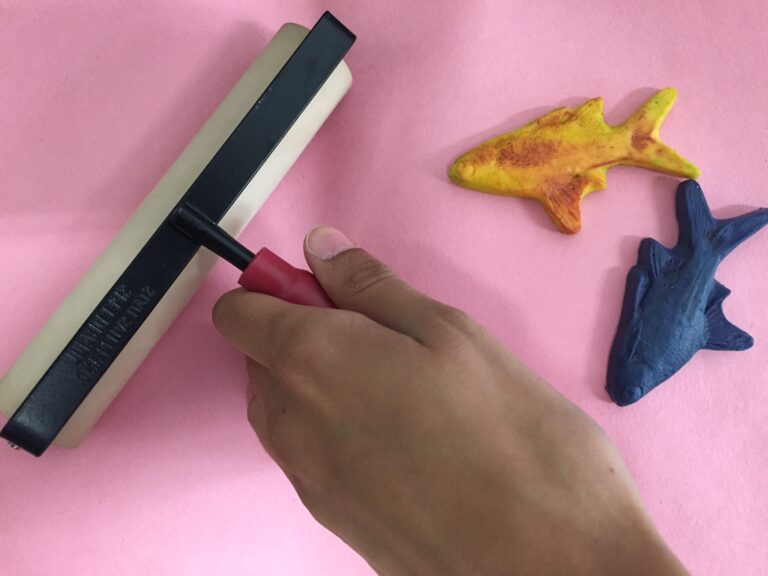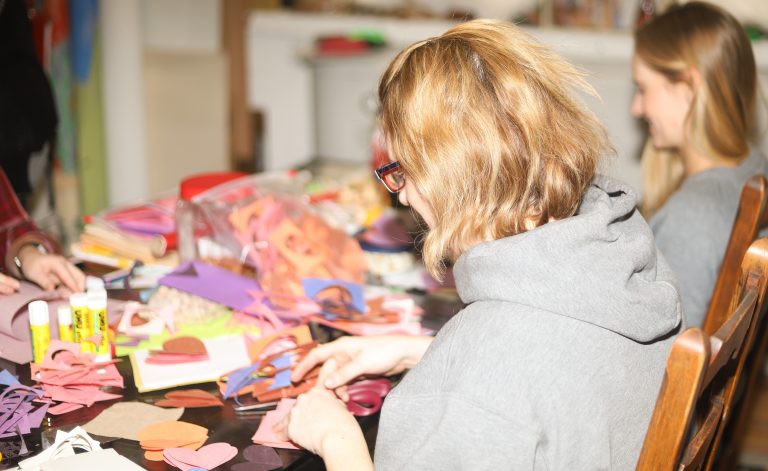

Objectives
Students will learn about the cultural history of Japan and experience the visual art of gyotaku (fish printing). A Gyotaku flounder print helps teach students about its anatomy. Flounder like all other flatfish, have both eyes on one side of its body while the opposite side is blind.
(Hands-On Learning, Multimedia Instruction, Discussion, Demonstration, Studio Practice)
Recommended Ages
Grade 5-8
Background
Gyotaku is a traditional Japanese art form that is highly unique, and some may even say bizarre. The word Gyotaku itself is a combination of two separate words – Gyo, which means ‘fish’, and Taku, which means rubbing. As its name indicates, Gyotaku is an art that produces imprints of fish through the method of rubbing.
Vocabulary
Gyo= fish
taku= rubbing
Printmaking
rubbing/ burnishing
monoprint
brayer
ink slab
texture
rice paper/ newsprint
printer’s ink
Materials
- Rubber Fish models
- Water-based Inks (black, red, orange, yellow, green, blue, purple)
- Large, Medium, and Small paintbrushes (such as sizes 4, 8, and 12 round)
- Newsprint
Directions
- Clean and dry the fish
- Have students lay the fish on a dry surface
- Apply water-based ink to the fish with a soft brush, sponge, or a foam brush
- Place the paper over the inked fish
- Peel back the paper
- Review the print
- Add background details

